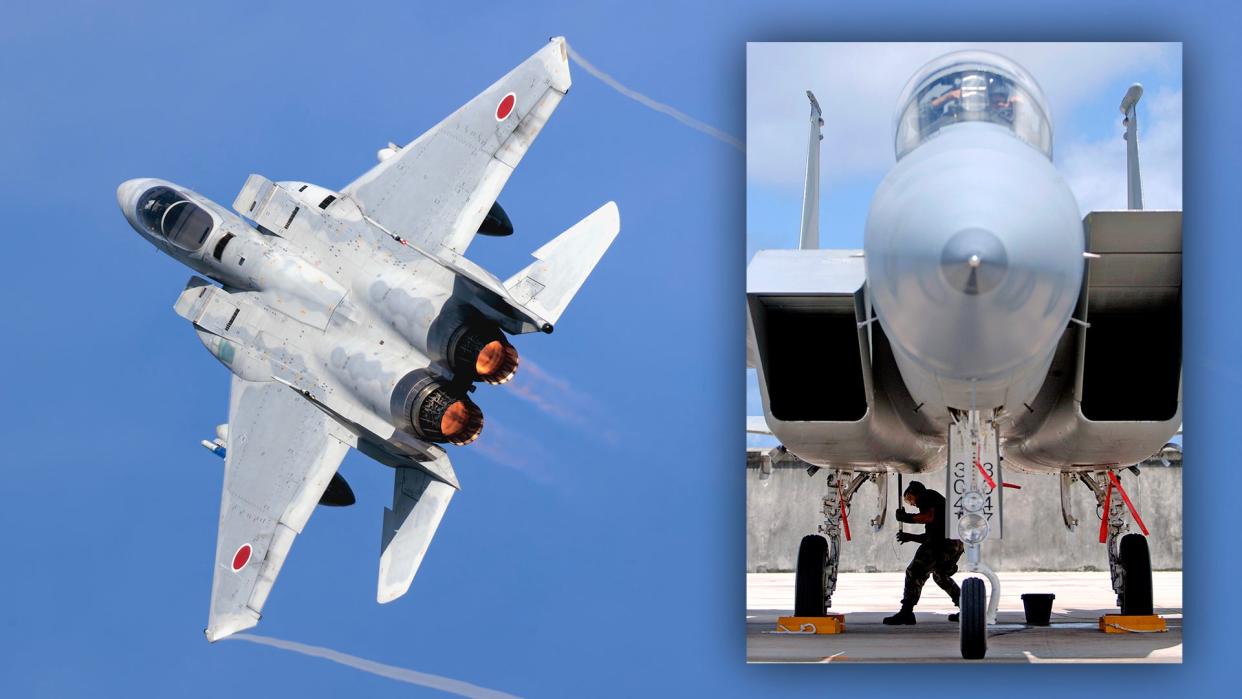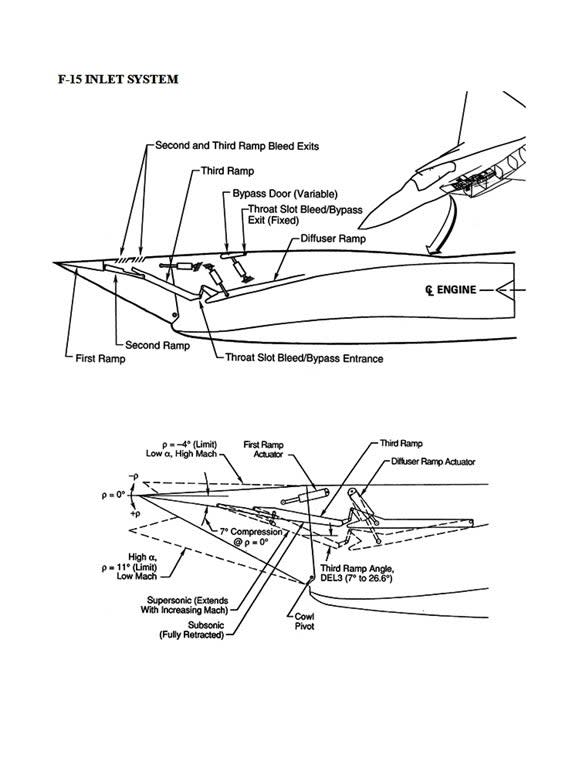F-15's Tilting Air Intakes Showcased In Awesome Video

Recent video of a Japanese F-15J Eagle brilliantly shows the fighter's maneuvering air intakes bobbing up and down in flight. Although it certainly looks strange in a techno-marvel kind of way, there is an important reason for it central to the aircraft's functionality.
The footage from @rikizomisono below shows a Japan Air Self-Defense Force (JASDF) F-15J with the serial number 12-9828, and was captured during rehearsals for this year’s iteration of the JASDF’s Gifu Air Show. The event is set to take place on November 12 at Gifu Air Field, which is located in Kakamigahara city, Japan’s southern Gifu Prefecture. Gifu Air Field is home to the JASDF’s Air Development and Test Wing, Air Development and Test Command, which flies F-15J alongside F-2 fighters, among other aircraft types.
https://twitter.com/rikizomisono/status/1720357317412327729
The movement of the fighter's variable-geometry air intakes is central to maintaining a smooth, optimum flow of air into its two notorious thirsty for air Pratt & Whitney F100-PW(IHI)-220E turbofan engines. Early on, the F-15 suffered from compressor stalls even with the help of its maneuvering intakes.
The F-15's air intakes are swept forward from top to bottom. The intakes 'nod' up and down under the control of an air data computer to keep the aperture facing directly into the airstream, ensuring massive amounts of air can be gulped through the intakes and into the engines. Intake movement is triggered by the aircraft's angle of attack (the angle at which relative wind meets a wing) as well as speed. This comes in especially handy when the F-15 is maneuvering hard a lower speeds. Another set of ramps inside the intake help slow the air to make sure it isn't turbulent and subsonic when makes it to the engine face.

We reached out to Shari (@shariinthesky), an ex-U.S. Air Force F-15 pilot, to get her take on the video as well as the F-15’s air intake design.
"[The variable external air intakes on F-15s] keep airflow to the engine face subsonic," she said. "The intakes do move in response to angle of attack. Whomever is doing this [in the video] is just playing around and is at the proper speed to get the intakes moving a good bit. You do hear the intakes 'clunk' as you fly through the flight regime. They move a decent bit, but usually slowly, unless you unload hard."
https://www.youtube.com/watch?v=nQXTn6iZy-Y
The engineering behind aircraft inlets remains one of the most complex aspects of designing high-performance aircraft (stealth makes it even more complicated) details of which you can read more about in these past War Zone articles.
F-15Js and their bowing external air intakes will continue to be a common sight in Japan for the foreseeable future. According to the 2023 World Air Forces directory, the JASDF has 155 single-seat F-15J combat aircraft, which are sub-variants of McDonnell-Douglas’ F-15C/D Eagle, and 44 two-seat F-15DJ training aircraft. Back in 2021, the Japanese government negotiated a deal with the U.S. to upgrade a number of F-15J fighters to F-15JSI 'Japanese Super Interceptors.' It was subsequently reported that 68 F-15Js will receive the upgrade, which is built around the same core avionics as the F-15EX.
So there you have it, the remarkable engineering behind the F-15's external air intakes showcased in one cool video.
Thomas Newdick contributed to this article.
Contact the author: oliver@thewarzone.com

